A visit to the Belvedere Palace-Museum in Vienna
Una visita al Palacio-Museo Belvedere en Viena
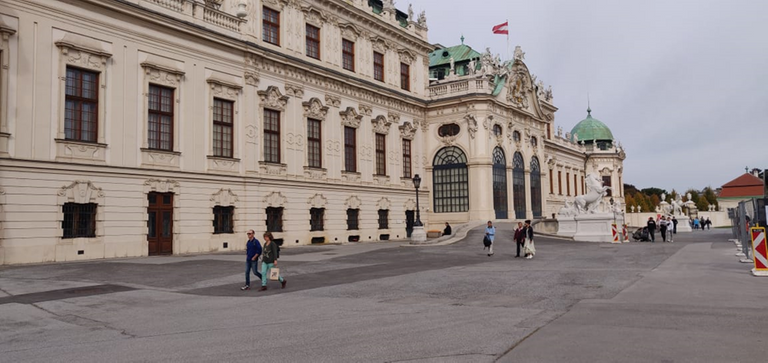
The Belvedere is a Baroque palace, made up of the Upper and Lower Belvedere, the Orangerie, the Prunkstall (former stables), and spectacular Baroque garden (El Belvedere es un palacio barroco, compuesto por el Alto y el Bajo Belvedere, el invernadero (Orangerie), el Prunkstall (antiguos establos), y por un espectacular jardín barroco). Photo taken by Nancy Núñez
Dear readers of this community, I want to start by expressing that one of the greatest aesthetic pleasures is produced by visiting one of the thousands of museums that exist in almost every country in the world; On this occasion, I would like to invite you to accompany me on a visit, through the photos, that my colleague and friend Nancy Núñez made with her family to the palace, converted into a museum, Belvedere. The information that I share with you has been obtained through reading a series of articles published on the Internet, in addition to the experiences recently obtained by my friends and, a little earlier, by myself in the respective visits made to this particular and excellent museum. The articles are indicated at the end of the writing.
Estimados lectores de esta comunidad, quiero empezar por expresar que uno de los placeres estéticos más grandes lo produce la visita a un museo de los miles que existen en casi todos los países del mundo; en esta oportunidad, quiero invitarlos a que me acompañen a una visita, a través de las fotos, que realizó mi colega y amiga Nancy Núñez con su familia al palacio, convertido en museo, Belvedere. La información que comparto con ustedes ha sido obtenida a través de una serie de artículos publicados en Internet, además de las vivencias obtenidas recientemente por mis amigos y, un poco antes, por mi persona en las respectivas visitas hechas a este particular cuan excelente museo. Los artículos se indican al final del escrito.
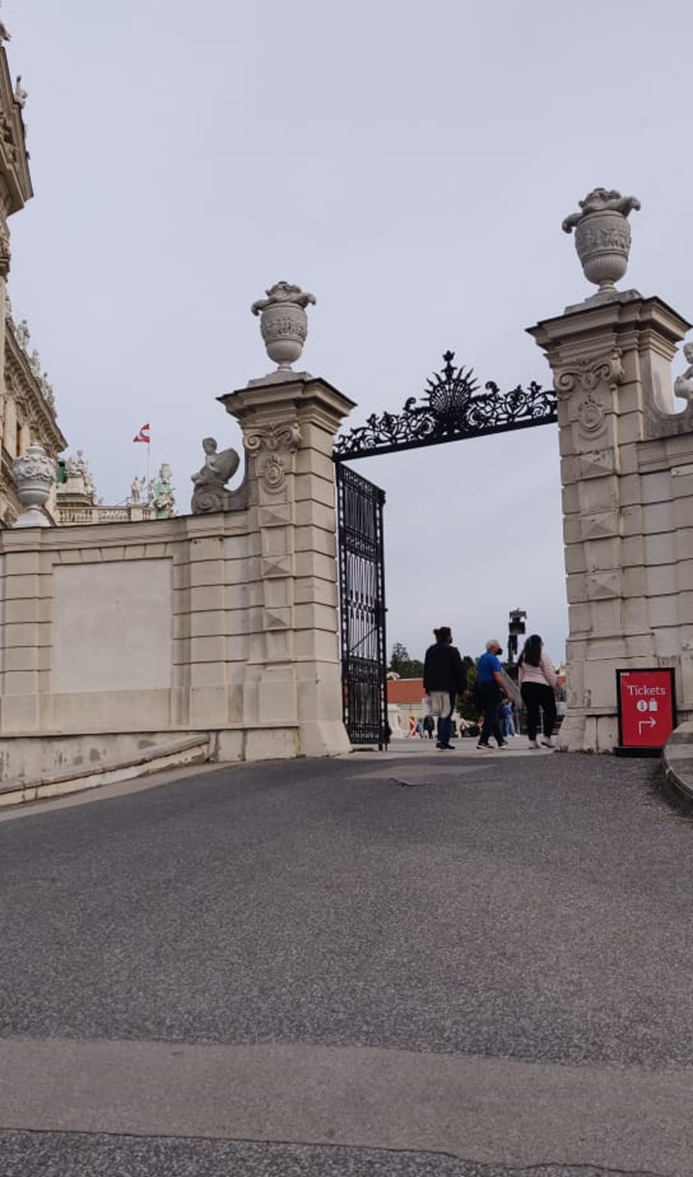
Entrance to the Palace-Museum, through its wonderful wrought iron bars (Entrada al Palacio-Museo, a través de sus maravillosas rejas de hierro forjado). Photo by Nancy Núñez
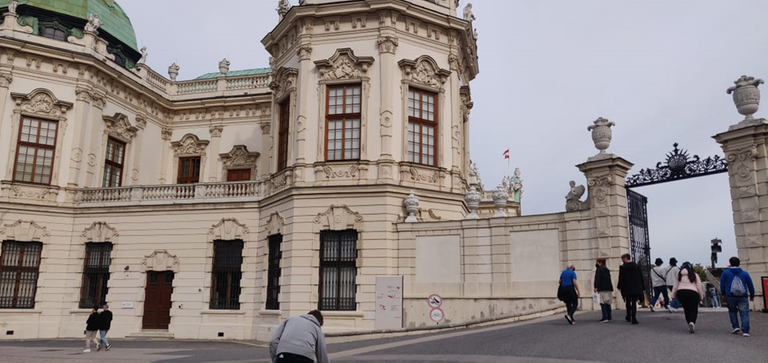
Entrance to the Palace (Entrada al Palacio). Photo by Nancy Núñez
The Belvedere Palace and Museum, located at 27 Prinz Eugen Strasse in Vienna, Austria, is a magnificent Baroque set of buildings where the most important art collection in Austria is found, with works by renowned Austrian painters such as Gustav Klimt, a conspicuous representative of Art Nouveau; Egon Schiele, a portrait painter, more specifically self-portraits, and Oscar Kokoschka, an expressionist painter, recognized as a great figure in 20th-century European art; not to mention the magnificent collection of medieval art and French Impressionism found in it. This palace was built by Johan von Hilderbrandt, in the 18th century, commissioned by Prince Eugene of Savoy to be his summer residence.
El palacio y museo Belvedere, ubicado en la calle Prinz Eugen Strasse 27 en Viena, Austria, es una magnífica edificación barroca donde se encuentra la colección de arte más importante de Austria, con obras de reconocidos pintores austríacos como Gustav Klimt, conspicuo representante del Art Nouveau, Egon Schiele, pintor de retratos, específicamente de autorretratos y Oscar Kokoschka, pintor expresionista, reconocido como una gran figura del arte europeo del siglo XX; sin contar la magnífica colección de arte medieval y del impresionismo francés que en él se encuentran. Este palacio fue construido por Johan von Hilderbrandt, en el siglo XVIII, por encargo del príncipe Eugenio de Saboya para ser su residencia veraniega.
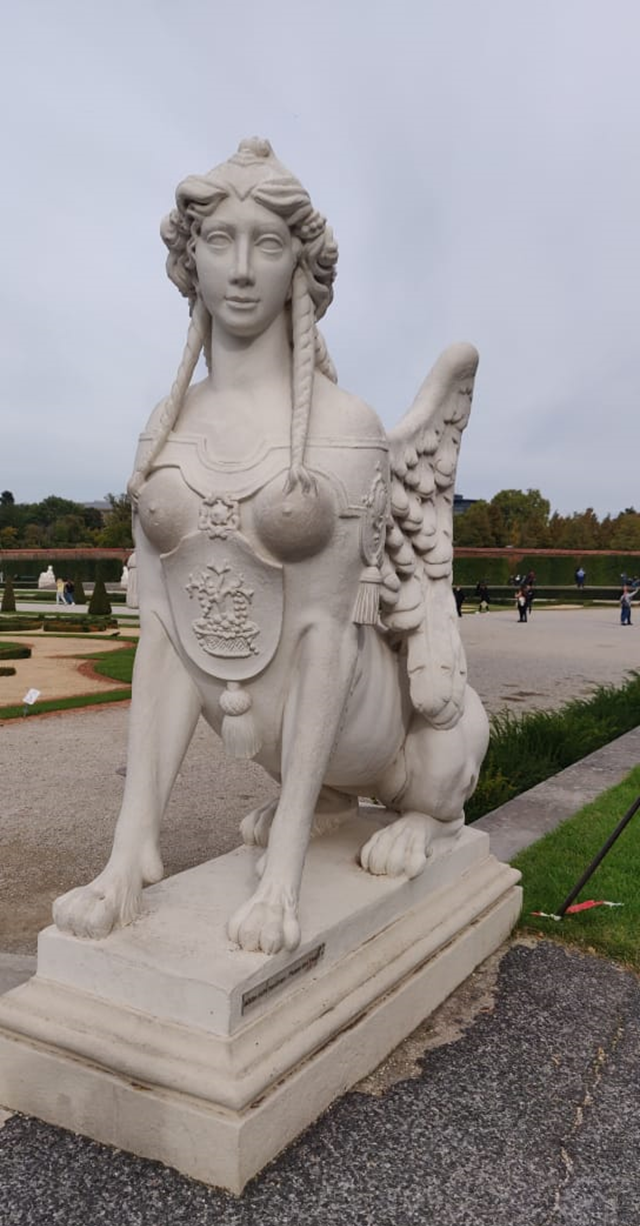
The sphinxes in the Belvedere garden are winged figures symbolizing power and wisdom (Las esfinges del jardín del Belvedere son figuras aladas símbolo de poder y sabiduría). Photo by Nancy Núñez
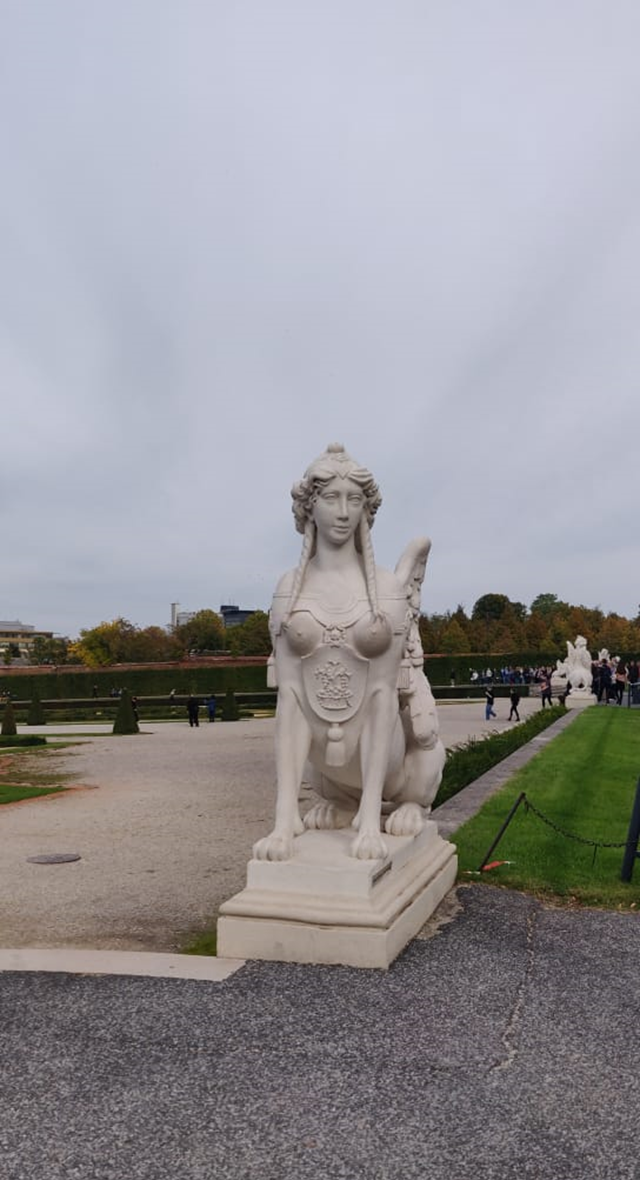
Two sphinxes border the palace garden. (Dos esfinges bordean el jardín
del palacio). Photo by Nancy Núñez
The structure of the work, considered one of the most important baroque architectural complexes in the western world, originally consisted of two palaces to which a third modern building was later added, by the architect Karl Schwanzer, where the works of contemporary art are. The construction began with the construction, in 1712, of the lower Belvedere, once the prince's residence, which consists of three large rooms for special exhibitions. Five years later, in 1717, the construction of the upper Belvedere, consisting of three floors, where the permanent collection of more than 400 works by the world-renowned Austrian symbolist painter, Gustav Klimt, is located, the work was completed in 1732. Later, in 1781, it was converted into a public exhibition space for Austrian works of art.
La estructura de la obra, considerada como uno de los conjuntos arquitectónicos barrocos más importantes del mundo occidental, constaba originalmente de dos palacios a los que se le agregó posteriormente una tercera edificación moderna, realizada por el arquitecto Karl Schwanzer, donde se ubican las obras de arte contemporáneo. La edificación se inició con la construcción, en 1712, del Belvedere inferior, otrora residencia del príncipe, el cual consta de tres grandes salas para exposiciones especiales. Cinco años después, en 1717, se comienza la construcción del Belvedere superior, que consta de tres pisos, donde se encuentra la colección permanente de más de 400 obras del pintor simbolista austriaco, mundialmente conocido, Gustav Klimt, la obra fue concluida en 1732. Posteriormente, en 1781, fue convertido en lugar público de exposición de las obras de arte austríacas.
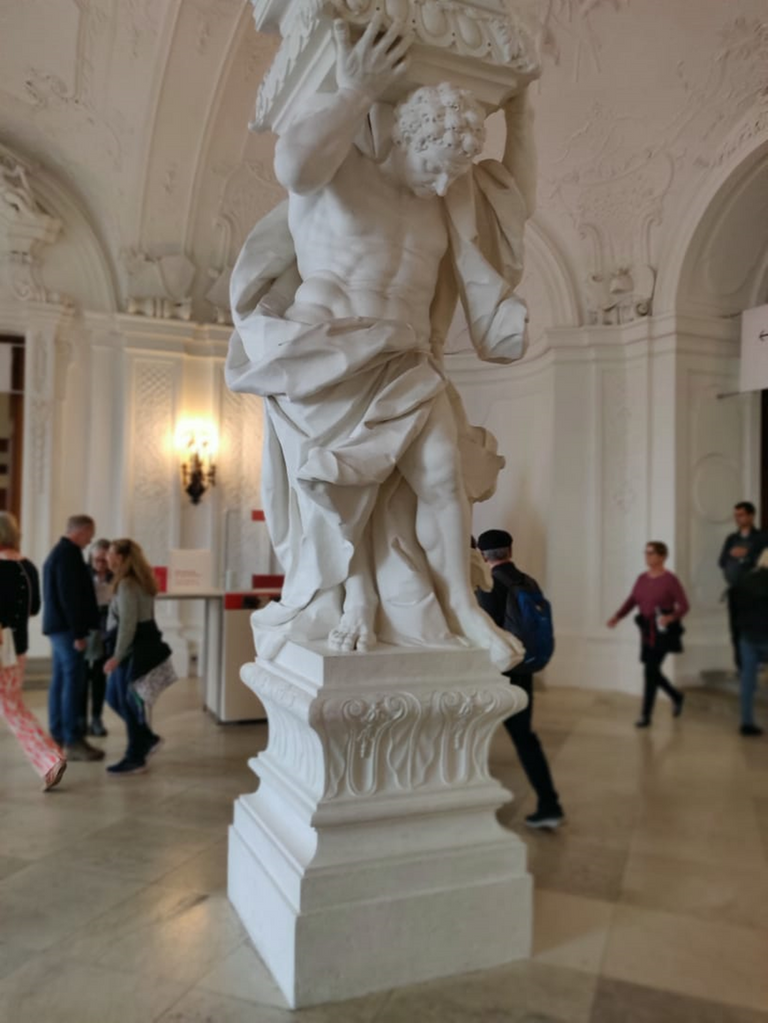
On the ground floor of the Upper Palace there are 4 statues of Atlas that support the vaulted ceiling (En la planta baja del Palacio superior se encuentran 4 estatuas de Atlas que soportan el techo abovedado). Photo taken by Nancy Núñez
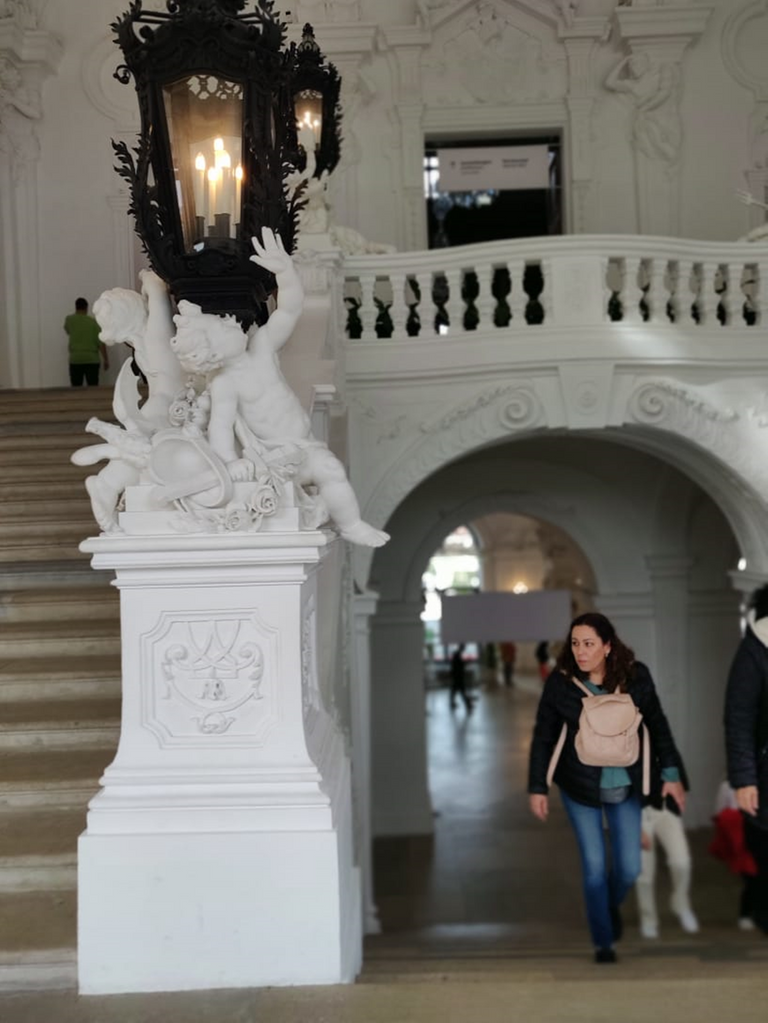
The entrance staircase and hall of the Upper Belvedere (La escalera de la entrada y el hall del Belvedere superior). Photo by Nancy Núñez
The extensive and spectacular garden of the Belvedere, completed in 1718, was planned by the French architect Dominique Girard, constitute a significant example of Baroque landscape architecture. Walking through this park is simply a delight, not only for its natural beauty, but also for the sculptures that surround it.
El extenso y espectacular jardín del Belvedere, terminado en 1718, fue planificado por el arquitecto francés Dominique Girard, constituye una muestra significativa de la arquitectura paisajística barroca. Pasear por este jardín simplemente es una delicia, no sólo por su belleza natural, sino por las esculturas que lo rodean.
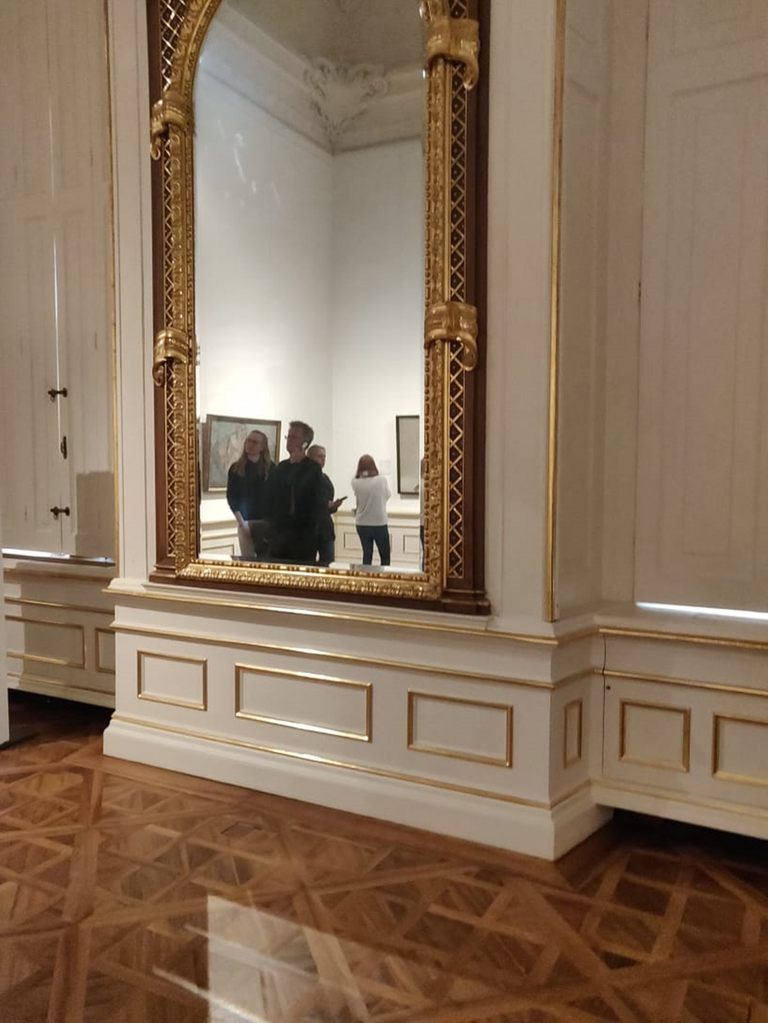
Magnificent mirrors can be seen on the walls of the Belvedere (En las paredes del Belvedere se pueden apreciar magníficos espejos). Photo taken by Nancy Núñez
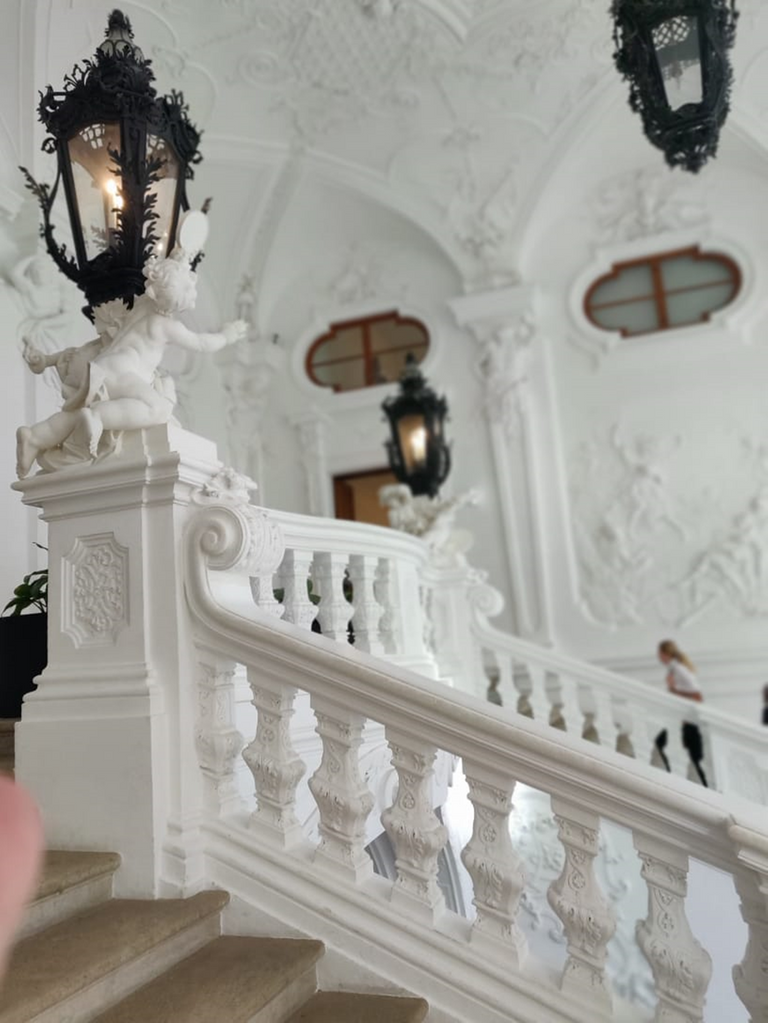
Detail of the beautiful staircase of the Upper Belvedere (Detalle de la hermosa escalera del Belvedere superior). Photo by Nancy Núñez
The visit to this museum is an experience that enriches us and fills us with pleasure when contemplating an architectural work of great value, works of art of great importance to know, not only the Austrian culture but also part of the history of humanity, and walk-through a garden that satisfy the aesthetic demands of the most demanding. Belvedere Palace was declared a UNESCO World Heritage Site in 1996.
La visita a este museo es una experiencia que nos enriquece y llena de placer al contemplar una obra arquitectónica de gran valor, obras de arte de gran importancia para conocer, no solo la cultura austriaca, sino parte de la historia de la humanidad y pasear por unos jardines que satisfacen las exigencias estéticas del más exigente. El Palacio Belvedere fue declarado Patrimonio Mundial por la UNESCO en 1996.
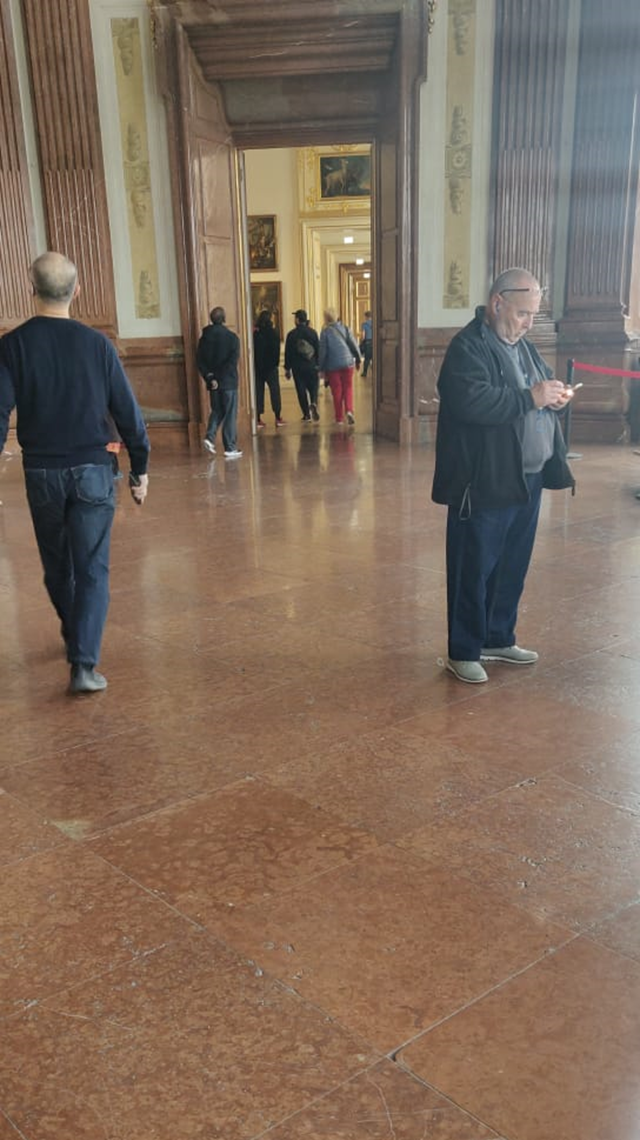
Wide corridors and exhibition halls of the Palace allow the enjoyment of the works of art and the unique palace (Amplios pasillos y salas de exposiciones del Palacio permiten el disfrute de las obras de arte y del singular palacio). Photo taken by Nancy Núñez
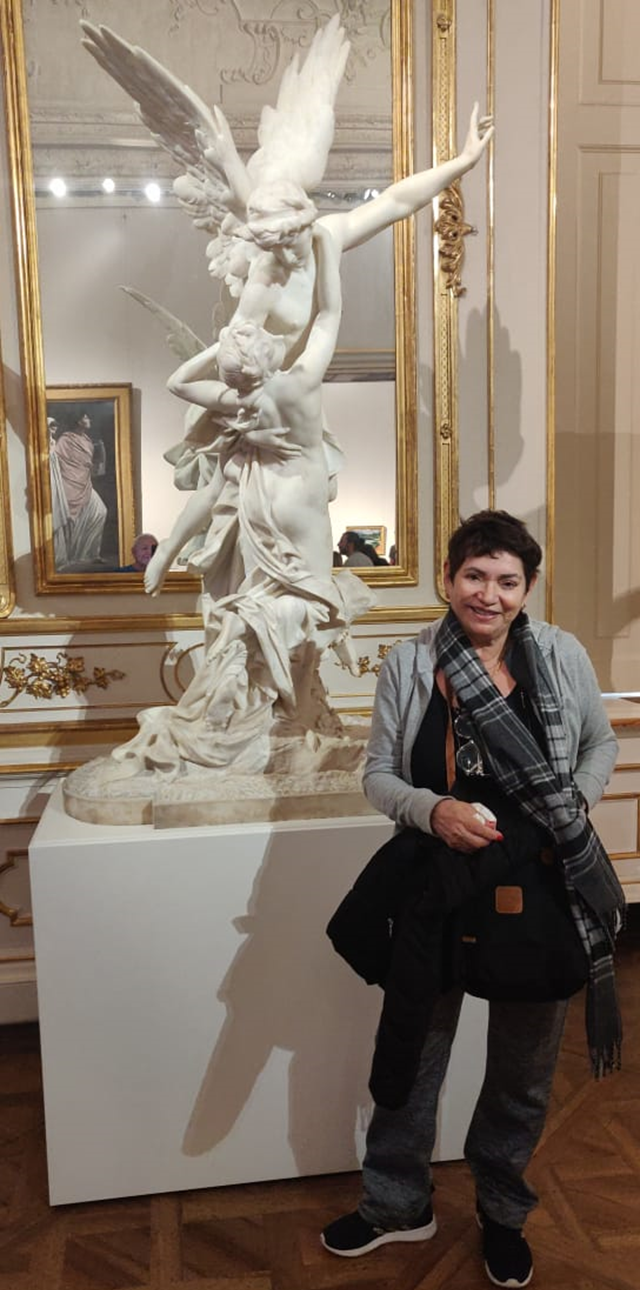
My friend Nancy in the foreground and behind her a statue of White marble (Mi amiga Nancy en primer plano y detrás de ella una estatua de mármol blanco) Photo taken by Nancy’s husband
Articles consulted on the internet (Artículos consultados en internet):
• https://www.wien.info/es/turismo-en-viena/museos-y-exposiciones-en-viena/museos-m%C3%A1s-destacados/belvedere-palacio-y-museo-341018
• https://www.belvedere.at/en/history-belvedere
• https://guiadeviena.com/museos/museo-belvedere/?p=31&l=3&id=73
• https://masdearte.com/centros/osterreichische-galerie-belvedere-2/
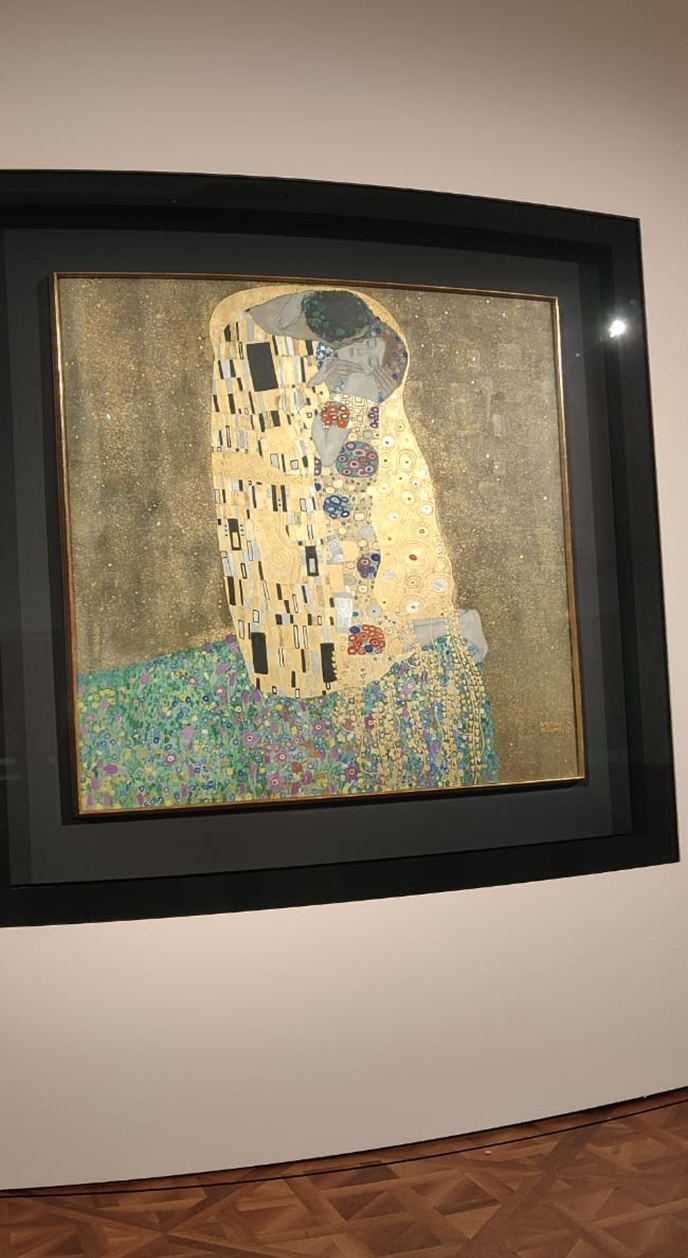
The famous work "The Kiss" by Gustav Klimt (La famosa obra “El beso” de Gustav Klimt). Photo taken by Nancy Núñez

“Plato holding ‘Res publica’ in his Hands” by the Italian painter Giacomo Antonio Boni (“Platón sosteniendo la ‘Res-pública’ en sus manos” del pintor italiano Giacomo Antonio Boni). Photo taken by Nancy Núñez
Photo gallery (Galería de fotos) Photos taken by Nancy Núñez
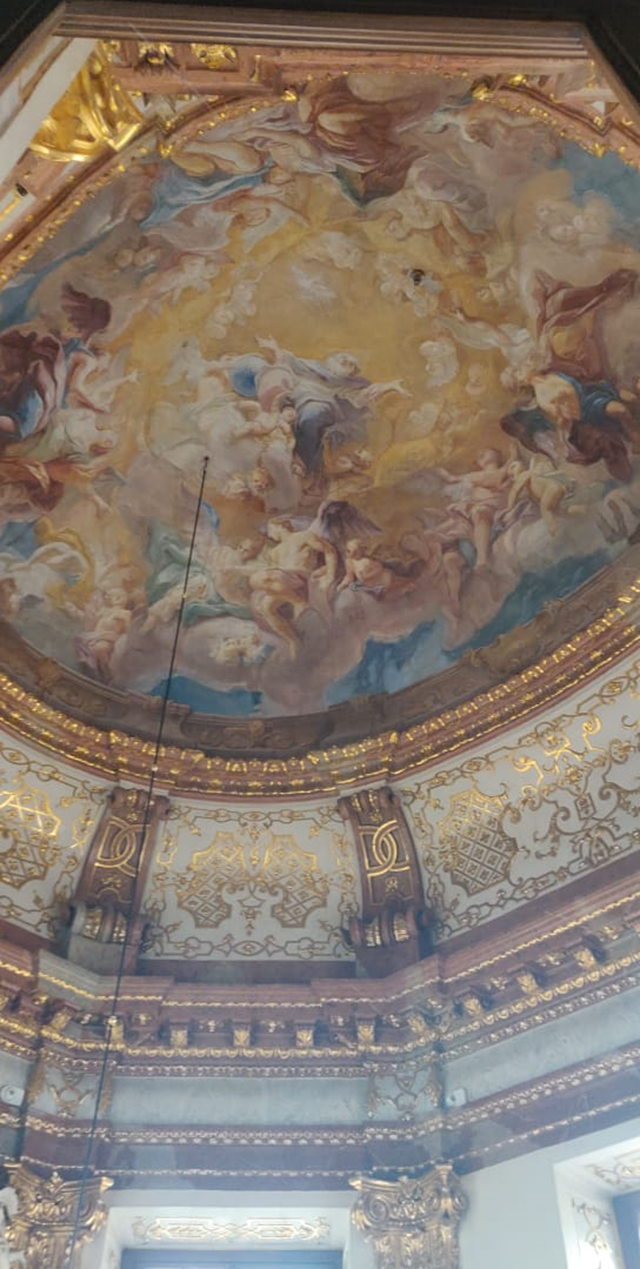
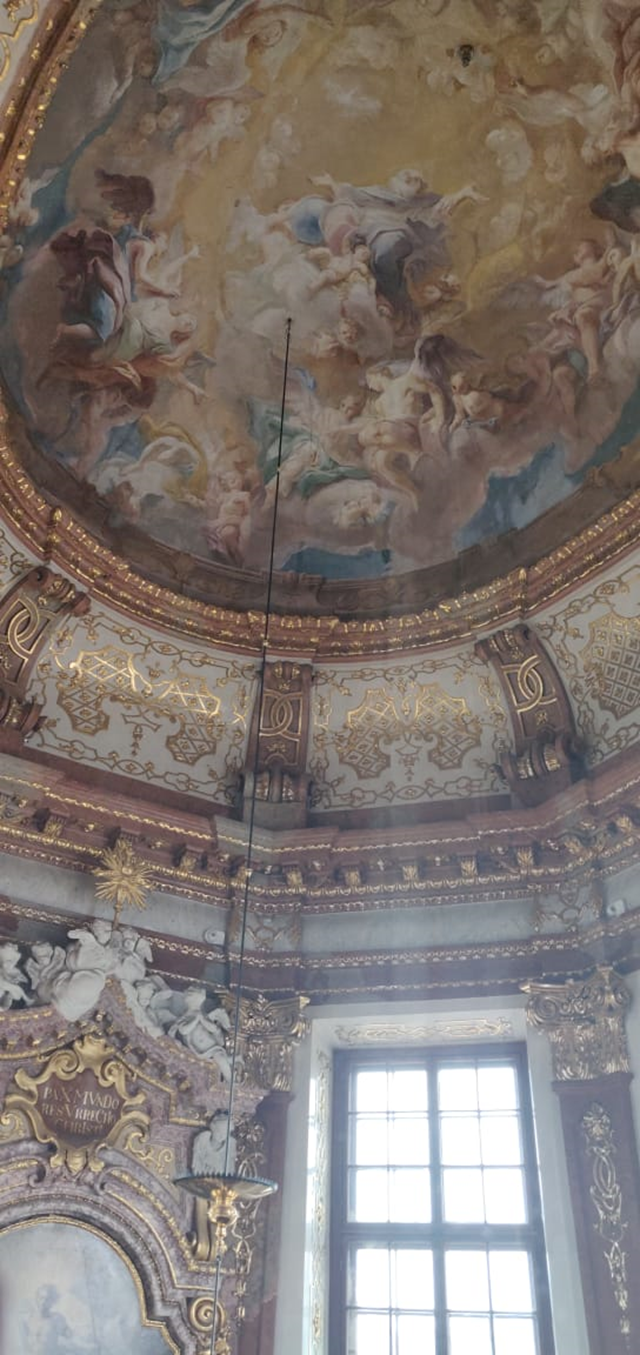
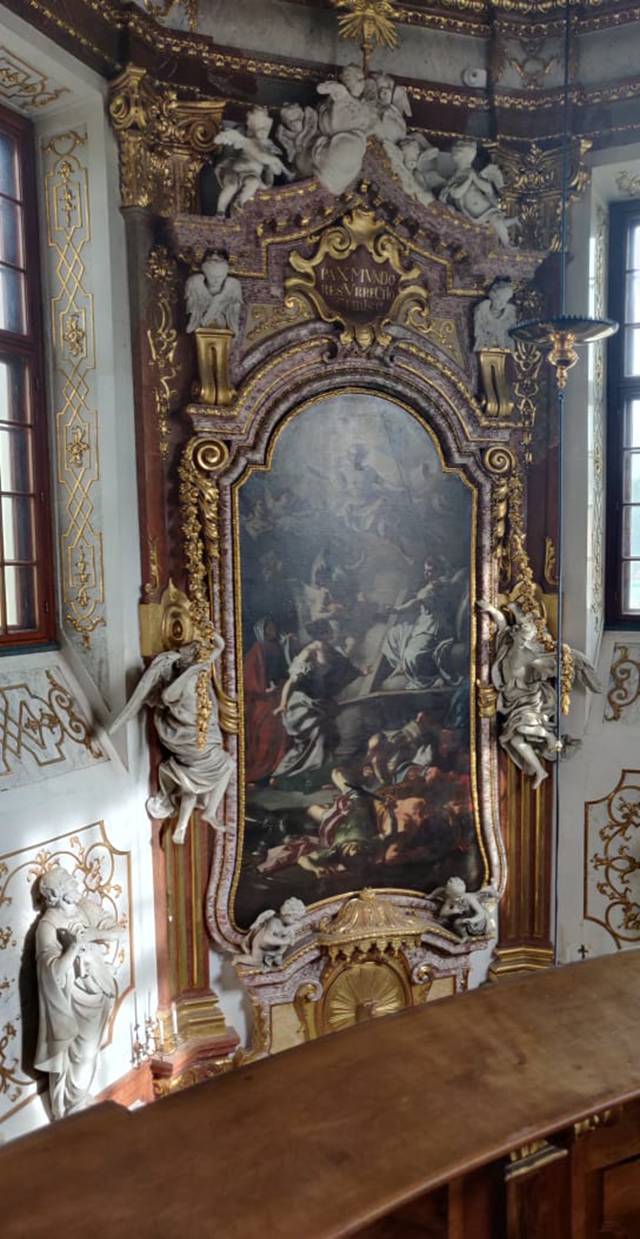
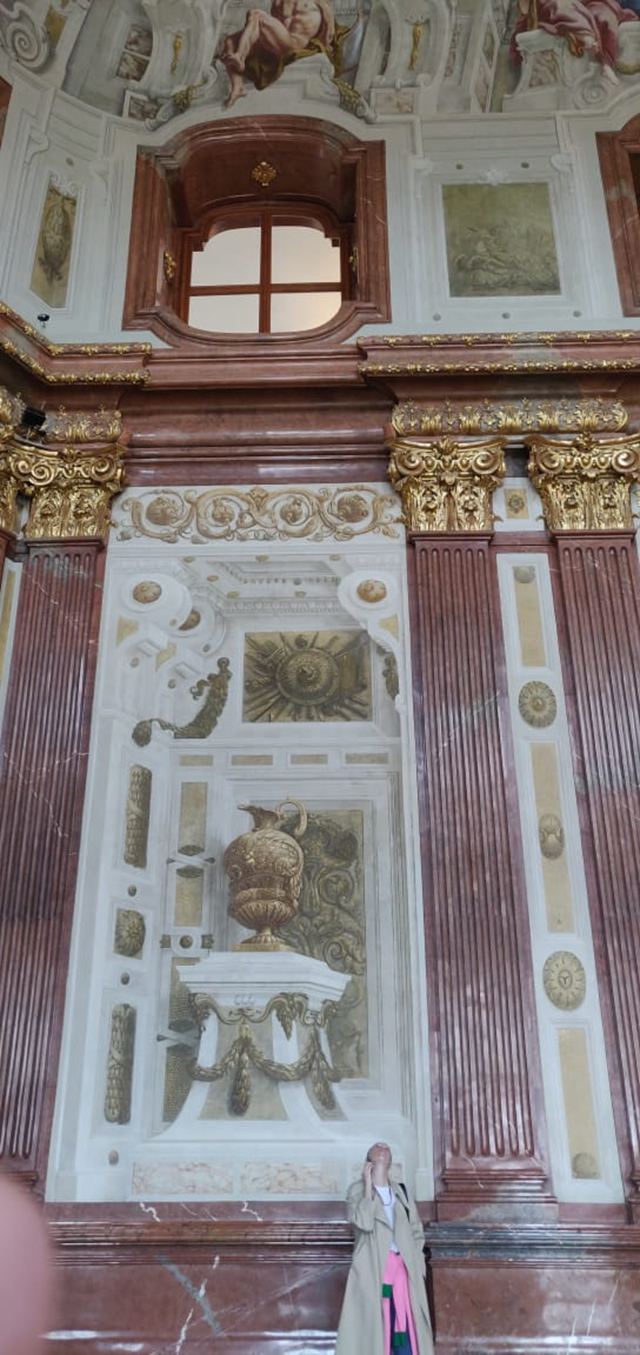
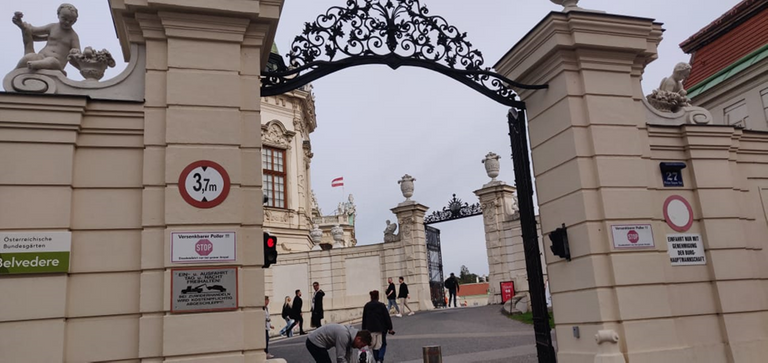
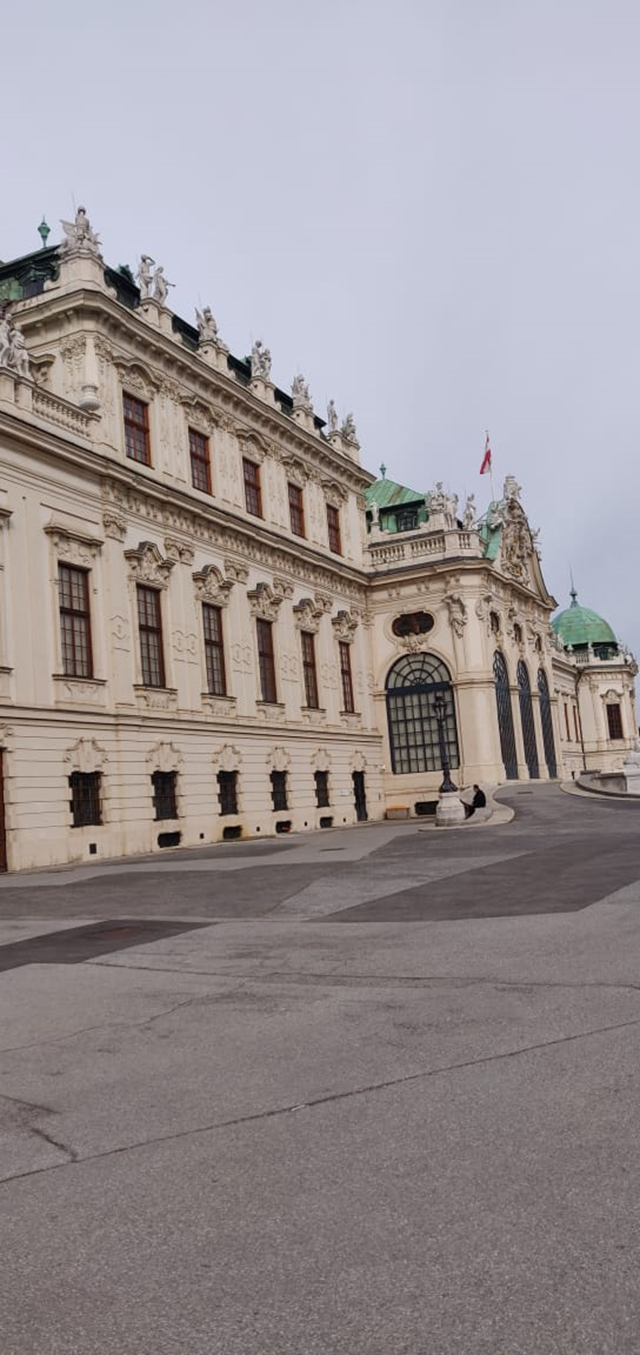
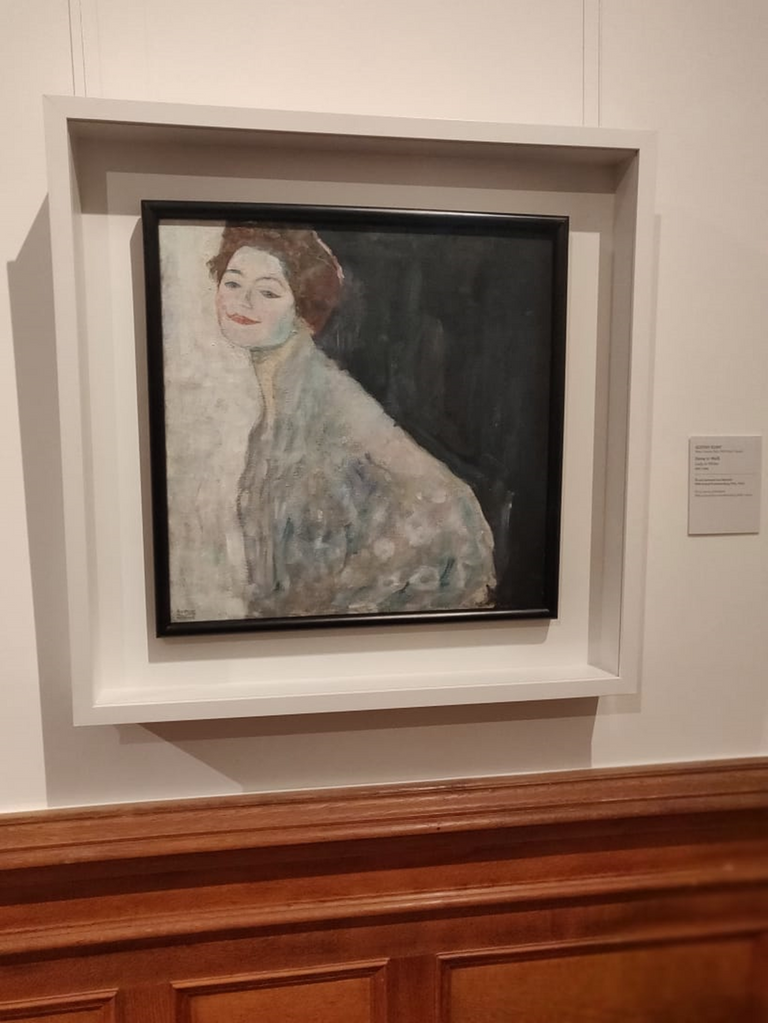






















Congratulations, your post has been added to Pinmapple! 🎉🥳🍍
Did you know you have your own profile map?
And every post has their own map too!
Want to have your post on the map too?